Login
Registration enables users to use special features of this website, such as past
order histories, retained contact details for faster checkout, review submissions, and special promotions.
order histories, retained contact details for faster checkout, review submissions, and special promotions.
Forgot password?
Registration enables users to use special features of this website, such as past
order histories, retained contact details for faster checkout, review submissions, and special promotions.
order histories, retained contact details for faster checkout, review submissions, and special promotions.
Quick Order
Products
Antibodies
ELISA and Assay Kits
Research Areas
Infectious Disease
Resources
Purchasing
Reference Material
Contact Us
Location
Corporate Headquarters
Vector Laboratories, Inc.
6737 Mowry Ave
Newark, CA 94560
United States
Telephone Numbers
Customer Service: (800) 227-6666 / (650) 697-3600
Contact Us
Additional Contact Details
Login
Registration enables users to use special features of this website, such as past
order histories, retained contact details for faster checkout, review submissions, and special promotions.
order histories, retained contact details for faster checkout, review submissions, and special promotions.
Forgot password?
Registration enables users to use special features of this website, such as past
order histories, retained contact details for faster checkout, review submissions, and special promotions.
order histories, retained contact details for faster checkout, review submissions, and special promotions.
Quick Order
PathPlusTM NCAM / CD56 Antibodies
CD56 (NCAM1 / neural cell adhesion molecule 1) is a member of the immunoglobulin superfamily involved in hemophilic and heterophilic interactions between neurons and neurons and muscle. It is marker of neural lineage and is also expressed in natural killer cells where its expression acts as a reliable marker of activation. It is also present on subsets of CD4+ and CD8+ T lymphocytes. Staining is expected to be primarily cytoplasmic. In normal tissues, it is highly expressed in the brain and nerves, in neuroendocrine tissues, in natural killer (NK) lymphocytes, and is used to identify NK lymphomas. CD56 is often considered the most specific and sensitive of small cell neuroendocrine markers in the lung, and is useful in diagnosing small cell cancers with crush artifacts.
References: Front Immunol 2017 8:892; Pruitt, 2011; Rekhtman, 2010; Kontogianni, 2005
6 PathPlusTM Antibodies
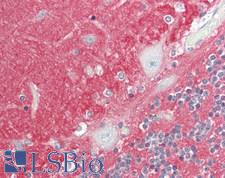
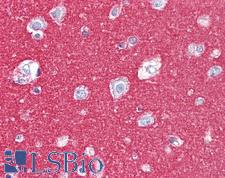
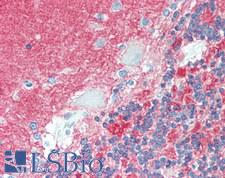

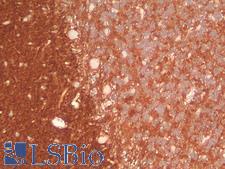
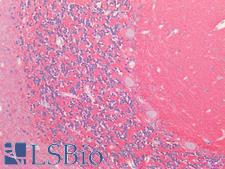
☰ Filters
Products
Antibodies
(6)
Type
Primary
(6)
Target
NCAM / CD56
(6)
Reactivity
Human
(5)
Mouse
(2)
Rat
(2)
Dog
(1)
Monkey
(1)
Application
IHC
(4)
IHC-Fr
(2)
IHC-P
(6)
WB
(3)
ICC
(1)
Host
rabbit
(3)
mouse
(3)
Product Group
PathPlus Cancer
(5)
PathPlus Cancer Pathology
(6)
Isotype
IgG
(2)
IgG1
(2)
IgG1,k
(1)
Clonality
monoclonal mc
(3)
polyclonal pc
(2)
recombinant monoclonal rmc
(1)
Clone
123C3
(1)
123C3.D5
(1)
1G4
(1)
NCAM1/2217R
(1)
Format
Unconjugated
(6)
Epitope
aa20-718
(1)
aa759-858
(1)
Publications
No
(6)

Cancer Pathology
Cancer
NCAM / CD56 Mouse anti-Human Monoclonal (aa20-718) (1G4) Antibody
Mouse, Dog, Rat, Human, Monkey
IHC, IHC-P, WB
Unconjugated
50 µl/$460

Cancer Pathology
Cancer
NCAM / CD56 Mouse anti-Human Monoclonal (123C3) Antibody
Human
ICC, IHC, IHC-Fr, IHC-P, WB
Unconjugated
0.1 mg/$375

Cancer Pathology
Cancer
NCAM / CD56 Rabbit anti-Human Polyclonal (aa759-858) Antibody
Mouse, Rat, Human
IHC, IHC-P, WB
Unconjugated
100 µl/$375

Cancer Pathology
Cancer
NCAM / CD56 Mouse anti-Human Monoclonal (123C3.D5) Antibody
Human
IHC, IHC-Fr, IHC-P
Unconjugated
0.05 ml/$375

Cancer Pathology
Cancer
NCAM / CD56 Rabbit anti-Human Recombinant Monoclonal (NCAM1/2217R) Antibody
Human
IHC-P
Unconjugated
100 µg/$525

Cancer Pathology
Fast Shipping
NCAM / CD56 Rabbit anti-Human Polyclonal Antibody
IHC-P
Unconjugated
50 µg/$395
Viewing 1-6
of 6
product results











